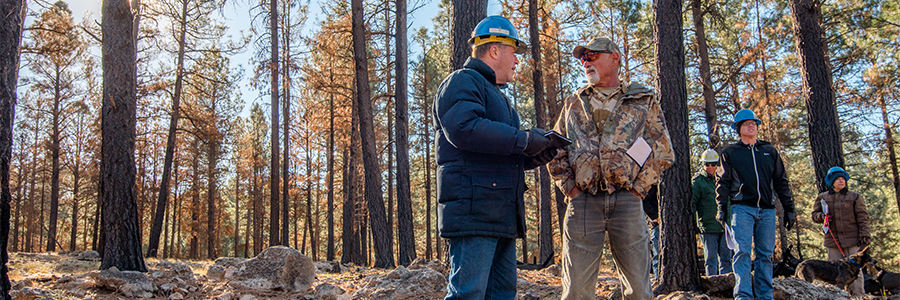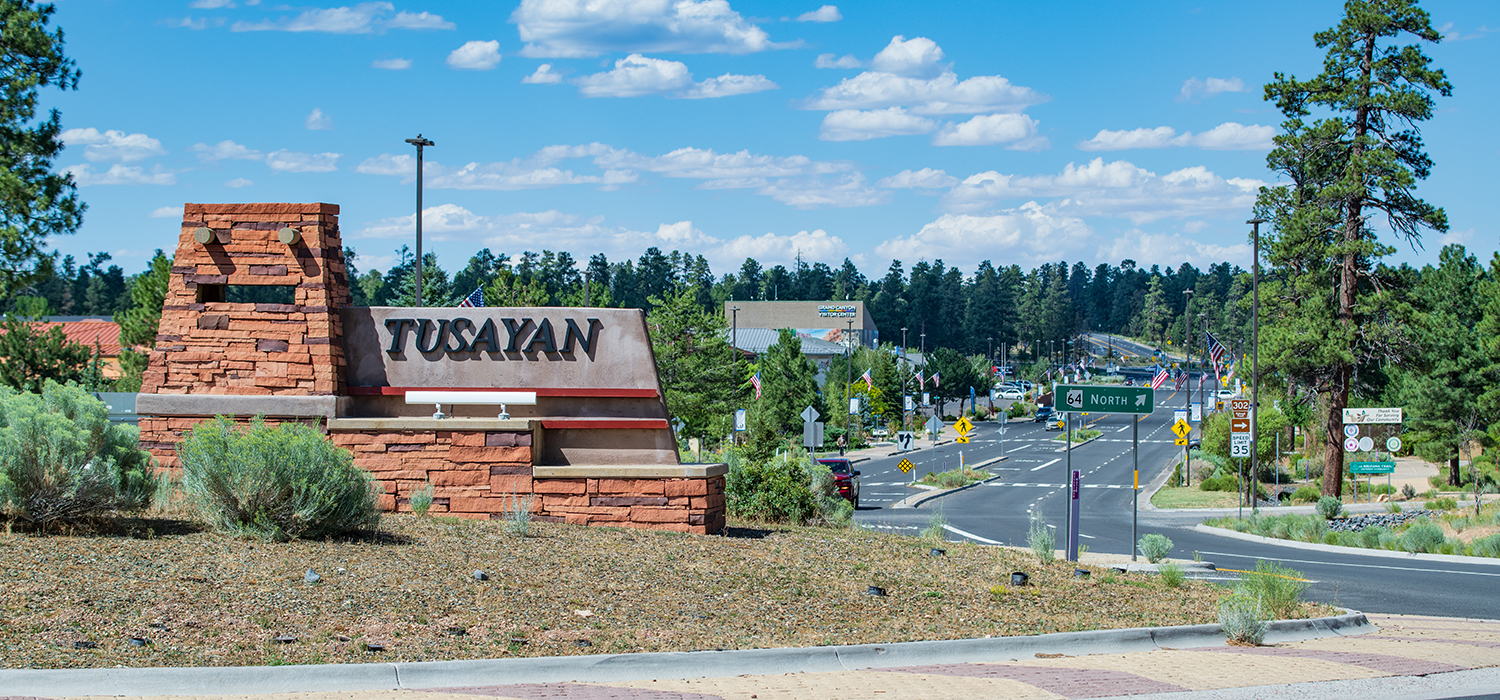
BY TRUST STAFF

Restoration on the Move
Across northern Arizona, the dry months between spring snowmelt and summer rains can be tense. Any spark can quickly set acres of forests ablaze. Though infrequent and low-intensity fires can help regenerate ponderosa pine forests, suppressing fire over much of the last century has led to dense, less-healthy forests where a fire can quickly move up the canopy and become severe. Over the last decade, the Trust has been working with other stakeholders in the Four Forests Restoration Initiative (4FRI), a collaboration to restore natural wildfire regimes to 2.4 million acres of national forests. Now, the U.S. Forest Service is revising its environmental review for 4FRI’s second phase, Rim Country, based on public comments and stakeholder feedback. This review outlines the potential benefits and harmful environmental effects of proposed restoration and guides how the work will be done. We continue to work with stakeholders to ensure that restoration improves the resilience of these forests and protects wildlife habitat, natural waters, and native plants.

Cerissa Hoglander
Climate Resilience Program Director

Why No Uranium Mine Is Safe
Introduced in the Senate in December 2019 after passing the House, the Grand Canyon Centennial Protection Act, which would permanently ban new uranium mines on about 1 million acres of public lands adjacent to the national park, still awaits co-sponsors and a hearing before the Senate Energy and Natural Resources Committee. In April, President Trump’s Nuclear Fuel Working Group released its strategy to bolster the nuclear fuel cycle. In addition to a call for Congress to allocate $1.5 billion over 10 years to support at least two unspecified U.S. uranium mines, the strategy also calls for removing barriers to public-land access for mining companies, including mining bans, and “streamlining” important federal protections for the environment and cultural resources. The Trust has published a research report, “Canyon Mine: Why No Uranium Mine Is ‘Safe’ for the Grand Canyon Region,” detailing the problems the mine is experiencing in a region where groundwater flow is highly variable and not well understood.


LeaderShift, Zoom Version
This summer, 14 young people with a deep love for the Colorado Plateau came together to strengthen their skills and to put their passion for environmental justice into practice. In a departure from our usual road-trip-style programs, this year’s LeaderShift took to Zoom for three weeks of intensive workshops that explored a vital question: “How do we transition the Colorado Plateau away from fossil fuels, while ensuring justice for all communities?” Each day, Indigenous elders tuned in to share stories of resilience and resistance to the extractive industries that have long threatened their homelands, and regional activists conducted creative digital trainings in an array of skills and tactics. After learning to strategize for campaigns, plan direct actions and art installations, and practice mutual aid, students dreamed of a future beyond extractive industry and mapped a path forward for their communities. “I have gained a newfound love and respect for the land all around me,” one participant said. “I am inspired to do all I can.”

Amber Benally
Rising Leaders Program Associate

Protecting a Gem on the Wasatch Plateau
Recently we led a field trip with Manti-La Sal National Forest staff to make the case for protecting a beautiful natural area along Left Fork Huntington Creek on Utah’s Wasatch Plateau. This 222-acre stretch, which includes many meadows and streams, is in excellent condition because it has been minimally grazed by livestock since 2002, unlike many areas in central Utah where cows and sheep have altered native vegetation and damaged streambanks and wetlands. We are proposing this area be designated a “research natural area,” to keep it permanently free of livestock grazing and allow native vegetation — including willows, grasses, sagebrush and aspen — and wildlife to flourish. As a research natural area, it would serve as a reference area to showcase healthy natural conditions and provide opportunities to monitor natural processes and the impacts of climate change. This proposal is part of the alternative we’re proposing for the upcoming revision of the Manti-La Sal National Forest Plan.

Marc Coles-Ritchie
Utah Forests Program Associate

Keeping Tabs on Canyon Mine
In early 2020, the Volunteer Program launched a new citizen-science effort called “Keeping Tabs on Uranium Mining.” On a monthly rotation, six volunteers head out to Canyon Mine, a uranium mine located fewer than 10 miles south of the Grand Canyon. From outside the chain-link fence surrounding the operation, volunteers take repeat photographs of the mine’s evaporation pond, where floodwaters with high levels of arsenic and uranium pumped from the mine shaft are left uncovered, attracting birds and wildlife. Volunteers also document the size of the waste-rock pile, its dust-mitigation sprayers, and whether the mine’s headframe is moving rock or water from below ground. Almost every time we’re at Canyon Mine, we observe violations. For example, we observed and reported large animal burrows under the fence in June, and in February, on a windy day, documented possibly radioactive water from the sprayers blowing outside the mine’s perimeter.

Audrey Kruse
Community Engagement Director

Standing With Bears Ears From Afar
It’s been a long time since I’ve visited Bears Ears. My last trip there was in early March — the last place I was before the pandemic hit. As I met colleagues and cultural leaders over dinner in Bluff, Utah, it was hard to resist shaking hands in camaraderie. As we said farewell with elbow bumps, we had no idea what was in store, or for how long we’d be away. In the meantime, the owners of the White Mesa uranium mill have sought to import radioactive waste to the doorstep of Bears Ears from far-flung Estonia and Japan. We’re doing all we can to make sure that doesn’t happen, and we thank you for your advocacy. As so many suffer and grieve the loss of loved ones, it’s some small comfort that Bears Ears will remain as a constant for us to return to and be healed when we can.
Tim Peterson
Cultural Landscapes Program Director

Also in this issue:
A scheme to build thousands of hotel rooms on the doorstep of Grand Canyon National Park is back. But where will the water come from? Read more ›